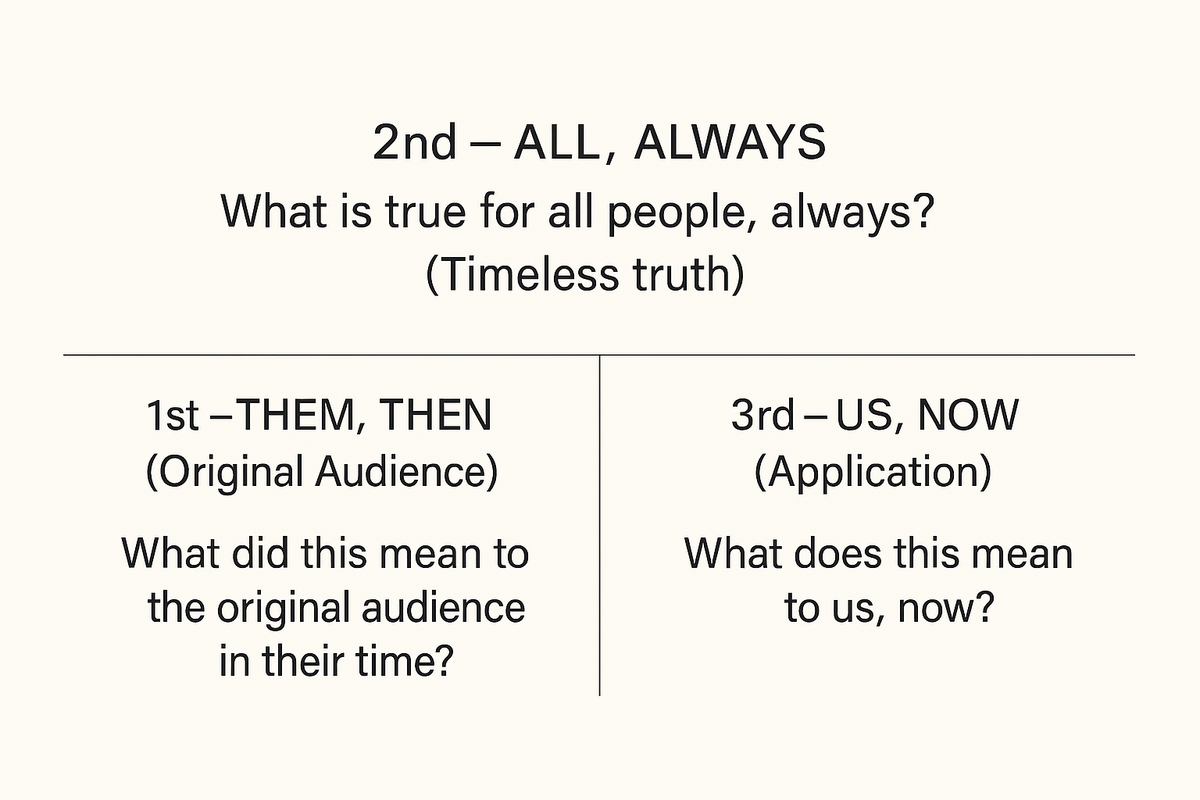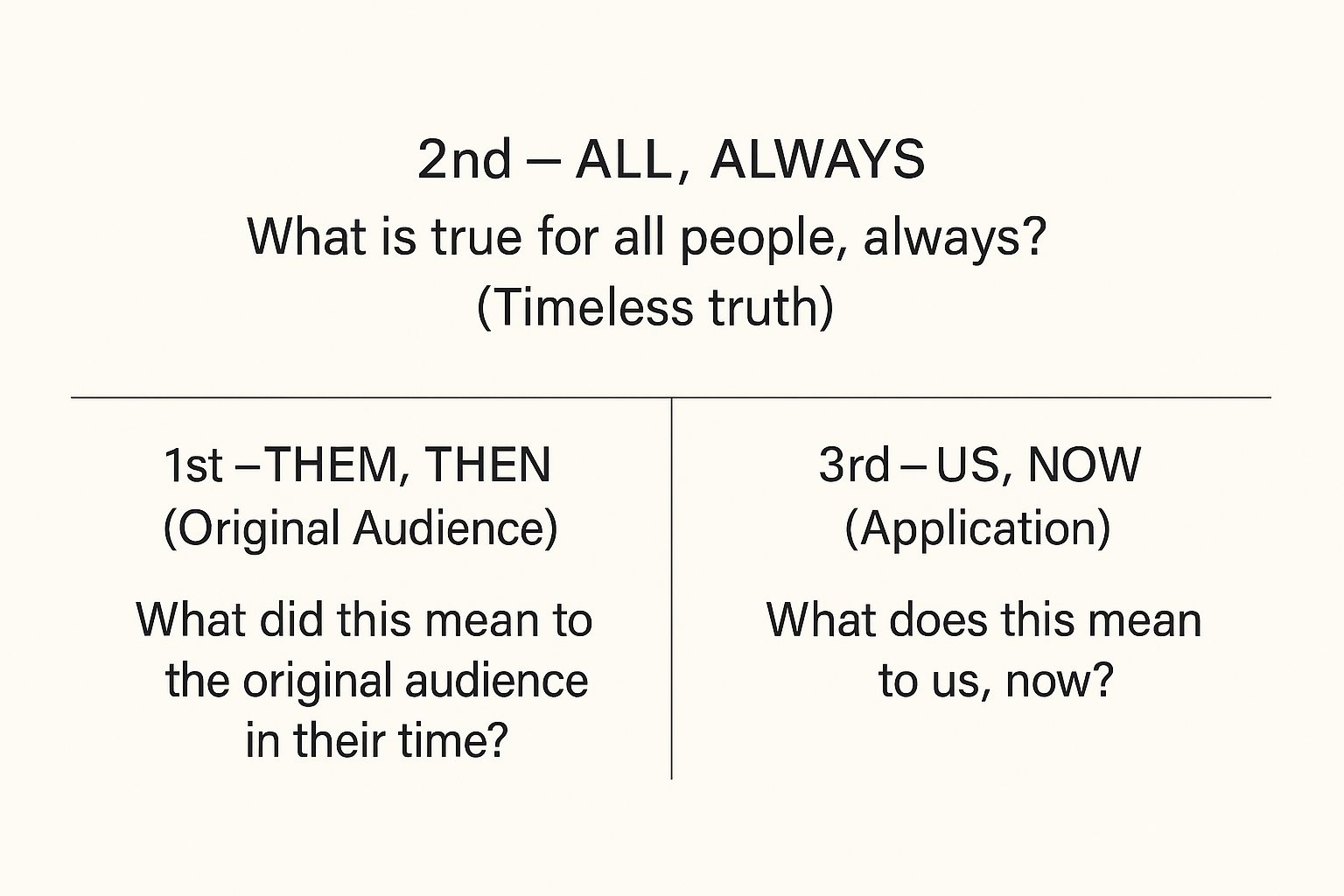Post 5 -The Danger of Dispensationalism: When Theology Fuels War Instead of Peace

—A pastoral invitation to re-examine popular end-times theology in light of Scripture and mission.
Many Christians today have been taught a specific vision of the end times—one that includes a secret rapture, a future rebuilt temple, a violent global conflict, and modern-day Israel playing the central role. This vision was often passed down by people we trusted—Bible teachers, mentors, pastors, or Bible studies with confident notes in the margins.
This framework is called dispensationalism, and while it was likely presented to you as “what the Bible clearly teaches,” it’s actually a recent and unusual theology. It doesn’t reflect the way the Church has read Scripture for most of its history. And more importantly—it misrepresents the heart of the gospel.
This article isn’t meant to attack those who hold these views. It’s an invitation. If you’re a Christian who wants to faithfully follow Jesus, read the Bible rightly, and live as a peacemaker in today’s world, I believe there’s a better way.
1. What Is Dispensationalism?
Dispensationalism is a theological system that divides history into distinct eras—or “dispensations”—in which God interacts with humanity in different ways. Its key teachings include:
- That God has two separate peoples: Israel and the Church.
- That believers will be taken to heaven in a secret rapture before a time of global tribulation.
- That a future rebuilt temple in Jerusalem will become the center of God’s activity.
- That the end of the world will involve a violent global conflict, especially in the Middle East.
But this is not what Christians have always believed.
This system began in the 1830s with John Nelson Darby, a British preacher and former Anglican priest. Darby developed a new approach to Scripture that emphasized these distinct eras, a sharp divide between Israel and the Church, and a focus on future fulfillment of Old Testament prophecy in modern geopolitical events.
Darby’s teachings spread quickly through the Scofield Reference Bible (1909), which added extensive notes into the margins of Scripture. These notes taught a generation of Christians to read the Bible through Darby’s lens—sometimes trusting the notes more than the text itself.
The Early Church Did Not Teach This
For the first 1,800 years of Christian history, the Church taught something quite different:
- That Jesus fulfilled God’s promises to Israel (2 Corinthians 1:20).
- That the Church is one new people, made up of both Jews and Gentiles (Ephesians 2:11–22).
- That God’s plan is not to remove believers from the earth, but to restore all creation.
Church leaders like Irenaeus, Justin Martyr, Origen, and Augustine understood the Church to be the continuation and fulfillment of God’s covenant people. They believed in the resurrection of the body, the renewal of the world, and the unity of God’s redemptive story through Jesus—not a fragmented system with separate tracks for Israel and the Church.
John Wesley and Early Methodists Rejected It Too
As Wesleyan-Holiness believers, we stand in a long tradition that has consistently rejected dispensational theology.
John Wesley, the founder of Methodism, never taught a rapture or a divided future for God’s people. Instead, he emphasized:
- Holiness of heart and life as the fruit of salvation.
- The ongoing work of the Spirit in every believer.
- A vision of the Kingdom already arriving, not postponed until after a violent end.
Early Methodists proclaimed a gospel that was hope-filled, present-tense, and transformational. They didn’t treat prophecy as a code to crack, but as a call to live in the power of Christ’s resurrection now.
2. How We Read the Bible Matters
Much of the confusion caused by dispensationalism comes from how it teaches people to read Scripture—especially prophetic and apocalyptic texts.
To read the Bible faithfully, we need to ask three simple, prayerful questions. Think of it like an Interpretive T chart:

Dispensationalism often skips the first two steps, especially in books like Daniel and Revelation. It pulls images out of context—a beast here, a temple there—and links them to modern headlines. But Revelation wasn’t written for predictions—it was written to encourage persecuted Christians to remain faithful.
When we ignore historical context and symbolic imagery, we risk misusing Scripture—and missing its real power.
3. Why Wesleyan-Holiness Theology Offers a Better Way
We don’t need fear-based charts or violent visions of the future to live faithfully. Many of us were taught these tools with sincere intentions—but good intentions don’t always lead to good interpretation.
Jesus’s call to “read the signs of the times” isn’t about predicting the end of the world—it’s about discerning how to live holy, Spirit-filled lives in the midst of an ever-changing world.
In the Wesleyan-Holiness tradition, we believe:
- Jesus is the center of history and the fulfillment of all God’s promises.
- The Church is not plan B—it is God’s people, redeemed and called to mission.
- Holiness is not about escape, but about becoming like Christ now.
- The Kingdom is not delayed—it is already breaking in through love, justice, and grace.
The entire act of redemption is a return to shalom—a theme that runs through this blog.
4. What’s the Real-World Impact?
This matters—not just in theory, but in real life. Dispensationalism has shaped how many Christians engage politics, global conflict, and other people.
- Christian Zionism: Treating modern Israel as sacred beyond question, often ignoring justice or Palestinian Christians.
- End-Times Anxiety: Stirring fear and confusion, distracting from transformation.
- Political Extremism: Fueling militarism and foreign policy through prophecy lenses.
- Reduced Witness: Obsession with predictions dulls our love for neighbors.
5. A Better Way Forward
If dispensationalism has been part of your journey, you’re not alone—and you’re not being judged. Many sincere, Bible-loving Christians embraced this framework with good intentions. But now is a chance to pause, ask questions, and grow.
This is not a call to throw away your faith—it’s an invitation to deepen it.
As followers of Christ in the Wesleyan-Holiness tradition, we are shaped by a gospel that is hopeful, present, and peace-bearing. That means we can let go of fear-based interpretations of the end times and reclaim the beauty of God’s mission to redeem the whole world.
What We Can Hold Onto:
- Christ is the center—not a nation, not a calendar.
- The gospel calls us to peacemaking, not division.
- We are sent into the world, not rescued from it.
- God’s blessing is for all peoples, not just one group.
- God is not waiting for war—He’s inviting us to participate in His redemptive mission now.
Practical Next Steps
- Revisit how you’ve been taught to read Scripture.
- Use the Interpretive T chart in your own study or small group.
- Read resources that offer a more faithful biblical vision:
- Jesus and the Land by Gary Burge
- Surprised by Hope by N.T. Wright
- The Problem with Evangelical Theology by Ben Witherington III
- Revelation: Holy Living in an Unholy World by Robert Mulholland
Let’s Live the Story of Peace
You don’t have to live in fear.
You don’t have to follow charts to be faithful.
You just have to follow Jesus.
The world doesn’t need more speculation.
It needs more faithful, sent ones—people who walk humbly, love deeply, and reflect Christ clearly.
Let’s be those people.
Let’s live sent.
